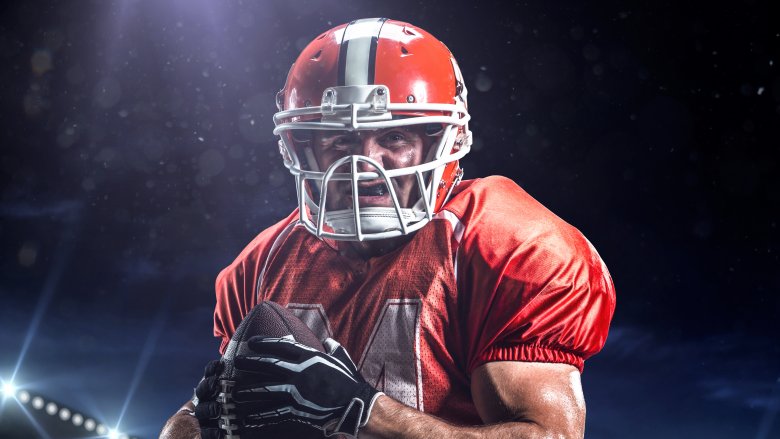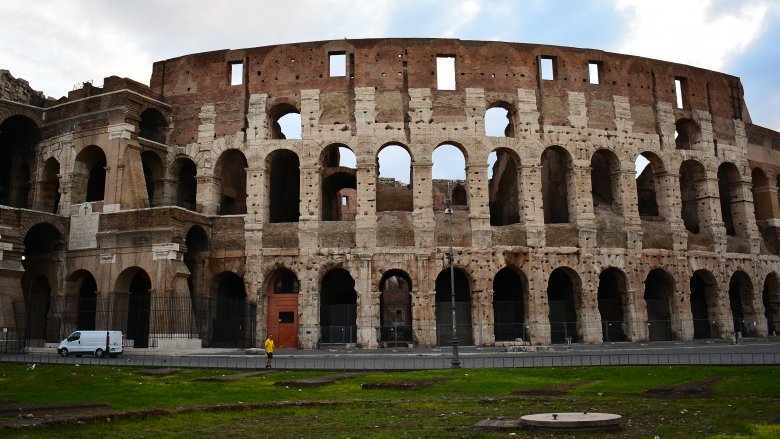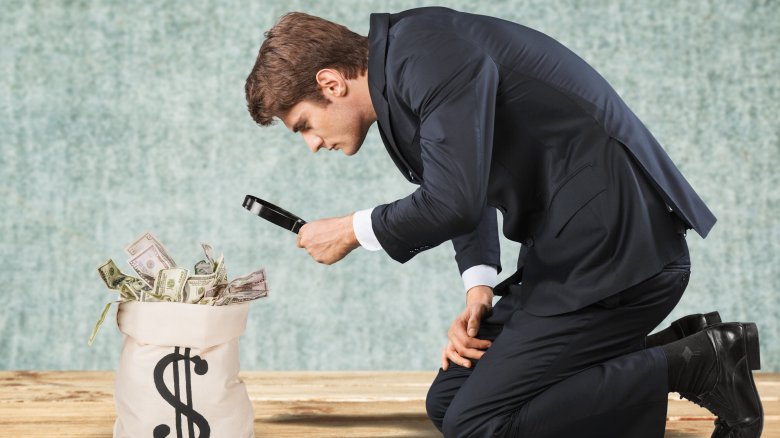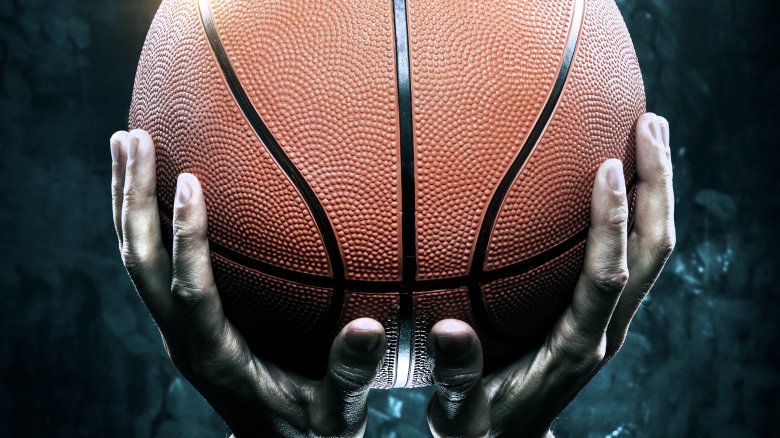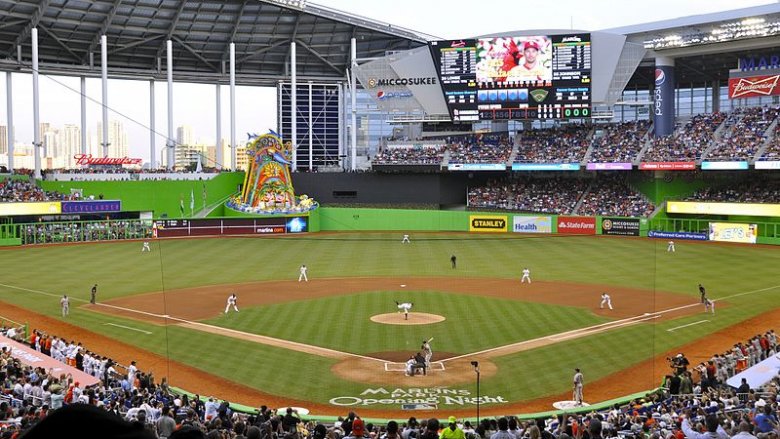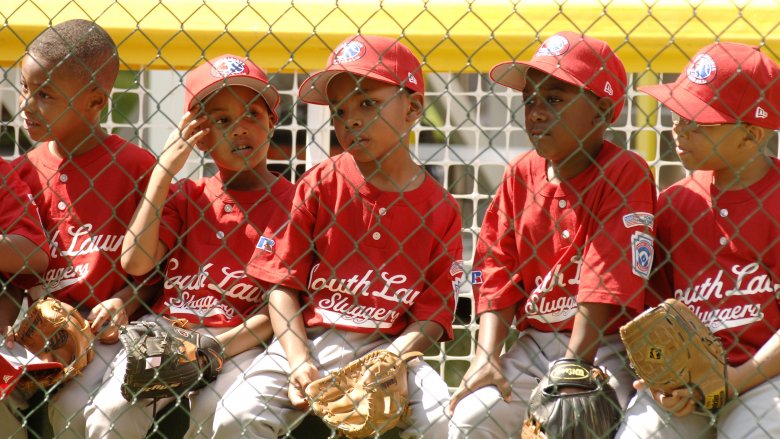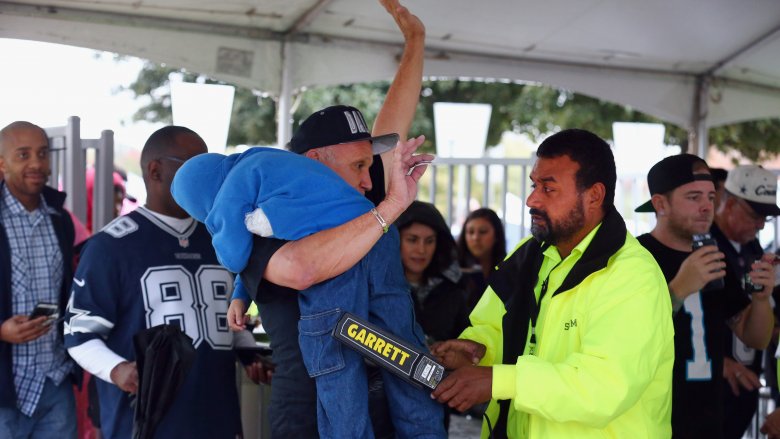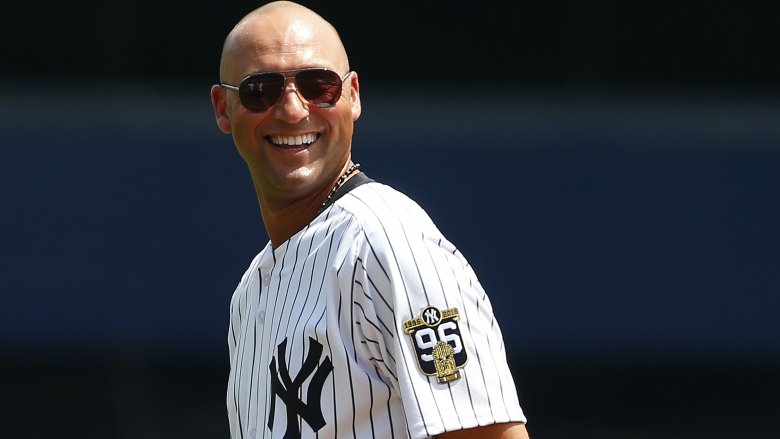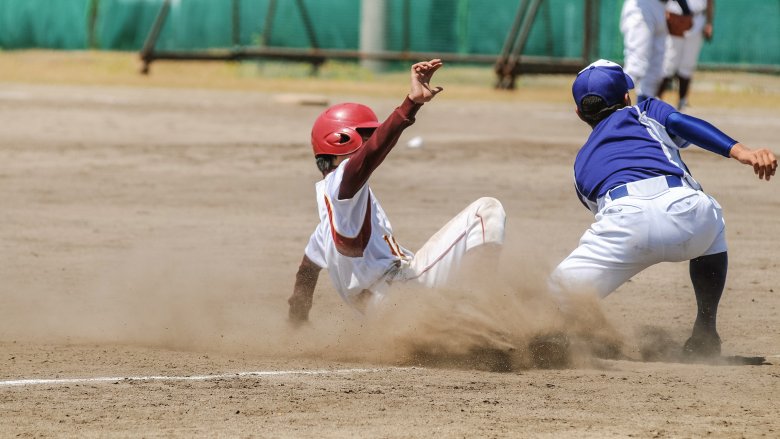How Sports Are Secretly Scamming You
The great thing about professional athletics is everyone can find a side to root for. That usually means teams or players, but it can also include scandals about the practices and structures within the leagues. See, everyone can find a side to root for, but that also means there are plenty of sides to root against. The sports leagues like to keep you focused on the game, but there are plenty of ways sports are secretly manipulating your fandom.
Public stadium funding
The Coliseum is an enduring landmark because it is a tribute to the appeal of mass spectacle. Thankfully, sports have come a long way since then. For one, the deaths are now accidental and rare. Also, gladiator armor wasn't a blank canvas for advertisements. Aside from that, the human need to build giant circles for heroes to get sweaty in continues unabated, and millionaires like millionaires have figured out how to grift you for those giant circles.
Sports stadiums often get lumped in with hospitals and schools as expensive public infrastructure, but there isn't much evidence that public funds should support privately owned profit centers like stadiums. The jobs they provide are seasonal and low-skill, and aside from the occasional concert or political rally, stadiums sit unused for a considerable portion of the year.
The 186 sports stadiums built since 1909 cost an inflation-adjusted $51 billion to build. Of that money, 61 cents out of each dollar came directly from public coffers. In return, members of the public get the privilege of shelling out hundreds of dollars to squint at their favorite teams while they lose. What makes the loss of those 32 billion public dollars even worse is how quickly many of these stadiums go out of fashion. By 2012, 65 of the 186 not-schools-or-hospitals have already been torn down or lost the teams that played there. Some local governments are still paying taxes on stadiums that aren't even in use anymore. The Coliseum survived the Roman Empire and Roman Catholicism, but the Marlins' stadium couldn't even survive Jeffrey Loria.
Tax-exempt status
Despite being one of the most powerful economic engines in the country, most pro sports leagues are untaxed institutions. Several major leagues are classified as 501(c)(6) organizations, which includes chambers of commerce and other associations that share common interests. In 1966, the law was amended to apply to sports leagues, like the PGA and the NHL, (Note that this tax-exempt status applies only to the leagues themselves, not to the individual teams that make them up. Much of the money is made by the teams and is taxed.) Maybe the "shared common interests" of the leagues included "ridiculously high salaries."
For example, during the 2012-2013 season, before voluntarily dropping its tax-exempt status, the NFL managed to turn $327 million in revenues into just $9 million in "profits." It's likely that the $60 million in salaries paid to top executives helped to hide some of that, along with a few other tricks, but what public interest do sports leagues serve that they deserve tax-exempt status? Going off sheer volume of entertainment hours produced, Viacom probably outpaces the sports leagues even when the sports are in season. Should Viacom's profits also be untaxed?
When leagues renounce their tax-free status (NBA, NASCAR, MLB, and NFL all now file as for-profit companies), they're probably doing it to keep the salaries of their top brass secret, not to preserve the American tradition of ballsports from the rigors of the free market. But at least those leagues are paying taxes now!
Yanking scholarships and oversigning
A full-ride athletic scholarship is the Holy Grail of amateur athletics, the gift that prepares student-athletes for their eventual careers. The scholarship compensates for all the money spent on equipment and camps, all the early mornings and dedication, everything sacrificed for an ideal future education.
But scholarships only do that for a relatively tiny number of football, volleyball, basketball, and tennis players. Even among those lucky few, the average award is still less than $11,000, and there's no guarantee it'll return next year. While some scholarships might cover all four years, many need to be renewed annually. And offering four-year rides might undermine the meat-grinder ethos in some of these departments. Many successful athletic programs succeed by oversigning talent, then separating the wheat from the chaff with brutally rigorous training sessions and natural college attrition. Alabama, for example, wore out 20 players during 2010 and 2011.
It's risky to describe athletic scholarships as "a gamble" because it implies there's the possibility of payoff, but at least bookies never ask for alumni donations.
The cable bubble
From an eye-watering variety of programming to bills so bloated they could double as flotation devices, cable television epitomizes the American tradition of paying too much for garbage you don't need. The dreadnought behind the size of your bill? Sports. To see how much of your bill goes directly into the pockets of Big Sport, take a look at So how much of your money goes directly into the pockets of Big Sport?
Every channel charges an affiliate fee per subscriber. For example, with 100 million U.S. subscribers, ESPN's fee of $5.06 brought in approximately $6.5 billion in 2013. You can see why other networks are eager for a piece of that action.
While $5 a month for ESPN might not sound like much, how many of you have just one ESPN? Because TV networks know cable providers only want to pay for popular channels, they will bundle together lesser-known stations with more high-demand content. Maybe you can't get CNN without truTV, or you can't have USA without ESPN U, etc. That $5 quickly adds up.
Some estimate that more than 80 percent of basic-cable households would unsubscribe from sports programming if it were possible. But for now, those who have no interest in the legacy of Darryl Strawberry must subsidize the pastimes of those who do. Until the bubble bursts, that is.
The NCAA is a pitiless machine
The NCAA might be the only organization in America that can make loan sharks look good. When it isn't micromanaging players as if they're livestock, it distorts the very nature of campus athletics for its own financial gain. The NCAA is a tax-exempt organization, meaning donations count as a tax write-off. Membership in elite ticket-buying clubs, purchased by donation and which run several hundred dollars and are often required by the school before purchasing any tickets at all. Thankfully, they're 80 percent deductible — same as a donation to charity.
Despite ostensibly being nonprofit, successful athletic departments still manage to bring in massive amounts of money for their schools. Large schools with football programs pull in an estimated 60-80 percent of athletic revenue from commercial activities in 2008, seven times more than other programs, like music or drama, brought in. College football bowl games can also get public money. Between 2007 and 2009, the Sugar Bowl took home $5.4 million in federal funds, despite being a massive revenue generator for the NCAA, schools, and affiliated corporations.
Even with all its loot, when it came time for the NCAA to upgrade its headquarters in the late '90s, it had local governments bid freebies against each other in order to "win." Indianapolis offered the NCAA a 142,000-foot headquarters building and 35,000-foot museum for just $1 of rent annually until the year 2060. Furthermore, Indy agreed to build 500 free parking spaces, and even landscape all this acreage for free. Kinda surprising the NCAA didn't just ask student-athletes to do the yardwork.
Private financial records
The first step in asking a bank for a loan is to break open the seal on your tax returns and let an accountant rifle through your every purchase, judging you all the while. The bigger the loan, the more vigorous the vetting, unless you happen to be an athletic franchise in need of several million dollars for a new yard, at which point society will physically carry you to the bank and kindly open the vaults for you.
With the exception of the Green Bay Packers, nearly every professional sports team keeps its financial records private. Green Bay is publicly owned because the only thing keeping Wisconsin from melting faster than sauna-brie is the fact that it regulates football as if it were a public utility.
Compare the Packers to the Miami Marlins, who recently held out their hats for over $300 million in construction bonds for a shiny new stadium, along with another $100 million to build an adjoining parking structure. That might not sound like much to a city as heated as Miami, but 2011 was the same year the city found its budget short by $440 million. These bonds and grants were issued because the Marlins claimed to be fiscally destitute. Because the Marlins' financial records are private, the city had no way to assess that claim. Thankfully, someone sniped a copy of the team's financial report, showing nearly $50 million in profits for the 2008-09 season.
Thankfully for the Marlins, at that point it was too late to stop anything. Enjoy the home run sculpture, fellas!
Bribes, campaign donations, and more bribes
Shady construction firms and sports arenas go together like Jimmy Hoffa and sports arenas. Of course, a shady construction firm in possession of grand aspirations needs public officials, and where enthusiasm doesn't spring naturally, it can always be garnered with $40,000 in campaign donations or $100 million in neighborhood revitalization, like what happened with the Marlins' new stadium.
Granted, the persuasion isn't always so ridiculously direct. When Congress attempted to regulate how NFL doctors handle painkillers on the road in 2011, a Cowboys' staff physician telling a member of the DEA, "Well, my owner knows members of Congress, and he'll get the law changed." After introducing legislation that would loosen restrictions of sports teams' use of painkillers, Representative Pete Sessions of Texas received $32,400 in contributions from the family of Jerry Jones, owner of the Dallas Cowboys. In sports terms, that's a home-field advantage.
Creative tax schemes for teams
Professional sports leagues often have a heavy hand on the pen that writes their regulations. From drug laws to cable pricing, the sports lobby is unafraid to wield its influence, and friendly tax laws are no exception.
For example, a percentage of the initial purchase price of a team can be deducted as an operating expense over a set number of years, meaning that operating costs are often artificially inflated. Historically, 50 percent of the purchase price could be deducted over five years, but in 2004 it was increased to 100 percent over 15 years. For the owners of the New Jersey Nets, the purchase price deduction added up to $41.5 million of the $49 million the team "lost" in 2006. The part-timer at the concession stands might have to pay 15 or 20 percent of his income in taxes while the millionaire in the owner's booth gets a tax break for buying the team in the first place.
And thanks to the political skullduggery of Bill Veeck, a baseball promoter who is generally not kindly recalled, franchise owners can deduct the costs of their players' salaries twice. In 1946, Veeck managed to convince the IRS that athletes lose value over time, like an aging livestock herd, and created the roster depreciation allowance. The cost of a player is deducted first as a normal employee expense, then once more a second time on the assumption that each player will perform worse every year after being signed, kind of like a tractor. Maybe we should all just switch to tractor sports instead. At least the tax schemes would be fair.
Banning outside food/drink and bags
In these days of increased bag checks and metal detectors in sports arenas, some facilities and leagues appear to be using the excuse of "security" in order to keep fans from saving money on concessions. It wasn't enough that the Atlanta Braves received close to $400 million from local taxpayers to replace the "old" baseball park. (It was only 20 years old. It couldn't even buy its own beer yet.) As the park was about to open for the 2017 season, the Braves did a tomahawk chop on fans, banning them from bringing in their own food or drink and citing security concerns. What's the concern, exactly? That Twinkies and Snickers could be lethal weapons?
After a huge public outcry, the Braves finally backed down a little, saying that "fans will be able to bring food inside of SunTrust Park as long as it fits inside a clear, gallon-sized plastic bag and may also bring a sealed plastic bottle of water." No other drinks are permitted under the rules, and the new policy only allows "one bag of food and one bottle of water per ticket," which is still pretty onerous.
The NFL has its own truly ridiculous bag policy for supposed security reasons. To "enhance public safety," the NFL says that everything fans bring in must be in a clear plastic bag, preferably in the branded one the league just happens to sell. You can also bring a small purse if it would fit inside the clear bag.
This policy also makes it more difficult to bring in food or drink because of the size restriction. And the NFL's solution if you actually don't know that regular bags are verboten is for you to take your stuff back to your car. But if even New York Giants players have had their cars broken into, then how can fans expect their cars to be safe?
Many players don't like the games as much as you do
While teams may drum up what a franchise means, trying to make every game like a life-or-death soap opera, the reality is that fans generally care way more than the players do about each particular game — even meaningful games. When New York Mets pitcher Tom Glavine gave up seven runs in just one-third of an inning in the final game of the 2007 season, preventing the team from making the playoffs, he made the mistake of saying in a laconic postgame interview that he was "disappointed" but "not devastated." Glavine says he still gets grief from fans over that comment. But that's just the way it is. Players have to be able to brush off a bad game and enjoy life. (And if they can't, they definitely won't win the next game.)
Many players don't even know the histories of their own teams. They probably spent more time actually playing the game than studying the history of a particular team. It's why actor/die-hard Yankees fan Denzel Washington separately beat players CC Sabathia, Reggie Jackson, and Robinson Cano in Yankee trivia when Jay Leno hosted the competitions over the years.
And in many cases, players don't watch games just for fun the way fans do. According to one story, the Yankees' Alex Rodriguez was incredulous to find out that teammate Derek Jeter didn't have a cable package to watch MLB games. Jeter was always honest about how he never watched any games he wasn't playing in, while Rodriguez wanted to know what other teams were doing. Neither is the right or wrong way, but not all players are superfans.
It's really expensive to raise a successful student-athlete
Sports is big business these days at every level, including in youth leagues. Those halcyon days of kids playing baseball or basketball for fun with their friends might be over. And as the New York Times has reported, even professional athletes with long careers have noted that "the way youth sports are played today bears no resemblance to their childhoods, and the money, time and energy that parents spend is probably misplaced."
Parents may spend thousands a year on youth sports. Former NFL kicker Travis Dorsch, now a college professor studying parents' involvement in their children's sports, told the publication that this sort of "investment brings out some sort of negative parent behavior," with the parent expecting their child to earn an athletic scholarship, despite the low odds. The Journal-News of Westchester, New York, estimates some parents spend $20,000 a year or more on high school athletics. While they may get the bragging rights of having a budding young star in their home, is it a wise investment? Not only are the odds of making it to college on a scholarship, let alone going pro, astronomically low, but the money spent may have been better off being saved for a regular college fund.
One athletic director told the Journal-News, most parents would be shocked if they tallied the various expenses through the years of raising a student-athlete. Instead, the AD suggests parents would be better off saving the money. When even athletic directors are questioning such expenses, that tells you how out of whack things have gotten.
